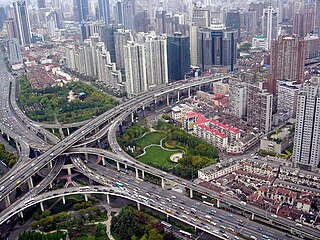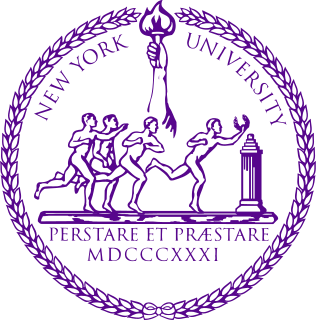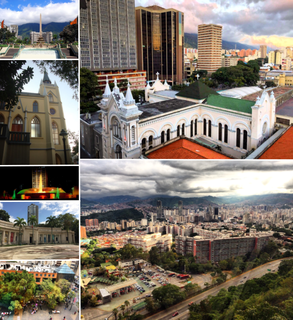
Othmar Hermann Ammann was a Swiss-American structural engineer whose bridge designs include the George Washington Bridge, Verrazzano-Narrows Bridge, and Bayonne Bridge. He also directed the planning and construction of the Lincoln Tunnel.
Leslie Earl Robertson is an American engineer. He was the lead structural engineer of the Twin Towers of the original World Trade Center in New York City. He has since been structural engineer on numerous other projects, including the Shanghai World Financial Center and the Bank of China Tower in Hong Kong.
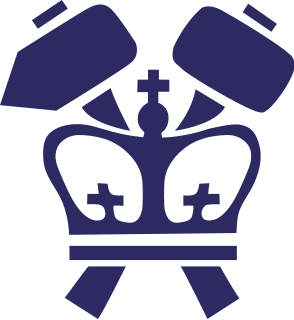
The Fu Foundation School of Engineering and Applied Science is the engineering and applied science school of Columbia University. It was founded as the School of Mines in 1863 and then the School of Mines, Engineering and Chemistry before becoming the School of Engineering and Applied Science. On October 1, 1997, the school was renamed in honor of Chinese businessman Z.Y. Fu, who had donated $26 million to the school.
Arup is a multinational professional services firm headquartered in London which provides engineering, design, planning, project management and consulting services for all aspects of the built environment. Founded by Sir Ove Arup in 1946, the firm has over 14,000 staff based in 92 offices across 35 countries, and is present in Africa, the Americas, Australasia, East Asia, Europe and the Middle East. Arup has participated in projects in over 160 countries.
Hannskarl Bandel, was a German-American structural engineer.
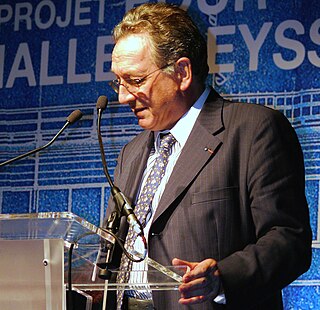
Dr. Michel Virlogeux FREng CorrFRSE is a French structural engineer and bridge specialist.

Michel Bakhoum was an Egyptian consulting civil engineer, university professor, and a researcher in concrete structures.
STV, is a private, employee-owned corporation specializing in engineering, architecture, planning and construction management services, serving the building and facilities, transportation, energy, and infrastructure market sectors. Employing more than 1,900 professionals, STV is 100 percent employee owned.
Claude Maxwell "Max" Stanley (1904–1984) was an American civil engineer, entrepreneur, philanthropist, peace activist, author and world citizen. He founded Stanley Consultants, an engineering and consulting firm, in 1939 with his younger brother Art. In 1943 he co-founded HON Industries, originally named Home-O-Nize, an office furniture manufacturing company; and, along with his wife Elizabeth, created and endowed the Stanley Foundation in 1956, which is an international relations think tank which focuses on "the promotion of public understanding, constructive dialog and cooperative action on critical international issues." All three organizations are headquartered in Muscatine, Iowa, United States.
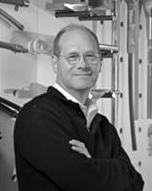
William Frazier Baker, also known as Bill Baker, is an American structural engineer known for engineering the Burj Khalifa, the world's tallest building/man-made structure. He is currently a structural engineering partner in the Chicago office of Skidmore, Owings & Merrill, LLP (SOM).
Masanobu Shinozuka was a Japanese applied mechanics expert in earthquake and structural engineering. Shinozuka's research focuses on field theory and risk assessment methodology in civil engineering. His works have been applied numerously in earthquake engineering in buildings, bridges, lifeline and environmental systems.
Dan Mircea Frangopol is an American civil engineer and the inaugural holder of the Fazlur R. Khan Endowed Chair of Structural Engineering and Architecture at Lehigh University, Bethlehem, Pennsylvania.

Carson F. Morrison, P.Eng. (1902–1993) was a university professor, innovative engineer, magazine editor, co-founder of the North American firm Morrison Hershfield, and president of a standards association. He was considered to be a touchstone for professional ethics and morality in engineering. He is remembered for his ideas and advice, knowledge and imagination.
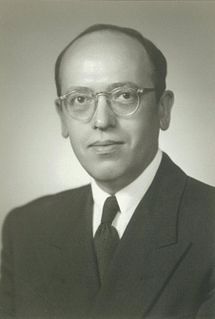
Charles Hershfield, B.Sc., M.A.Sc, F.E.I.C, P.Eng. (1910–1990) was widely recognized by the engineering community and known for his innovative structural engineering solutions, as a senior assistant engineer and lieutenant with the Department of National Defense, a professor at the University of Toronto, as co-founder of the North American firm Morrison Hershfield, and as a prolific author. He was a lifelong advocate of education and the engineering profession.
Emil H. Praeger was an American architect and civil engineer.

Weidlinger Associates, Inc., was a U.S.-based structural engineering firm that designs and rehabilitates buildings, bridges, and infrastructure and provides special services in applied science, forensics, and physical security. Weidlinger’s clients include corporations, private clients, institutions, and federal, state and local governments. The firm is headquartered in New York City, with branch offices in Massachusetts, Connecticut, New Jersey, California, New Mexico, and Washington, DC. The firm also conducted business as Weidlinger Associates, Ltd., in Scotland, UK.
Richard George Weingardt was an American structural engineer. Upon his death, Weingardt had worked on over 5,000 projects.
Eduardo Kausel is a Chilean-born, American engineering scientist who has made significant contributions in the fields of Soil Dynamics, Structural Dynamics, Wave Propagation, and Engineering Mechanics.
Engineering consulting is the practice of performing engineering as a consultant. It assists in the development of both public and private companies. This development can be in a variety of different ways including process management, idea organization, product design, fabrication, branding, and marketing. Engineering consulting firms require engineers from multiple disciplines including civil, structural, mechanical, electrical, environmental, chemical, industrial, and agricultural. This diversity is necessary to cover the wide variety of potential projects that could be presented to the firm. Additionally to the technical work Engineering Consultants will assist in the marketing of company or product.
